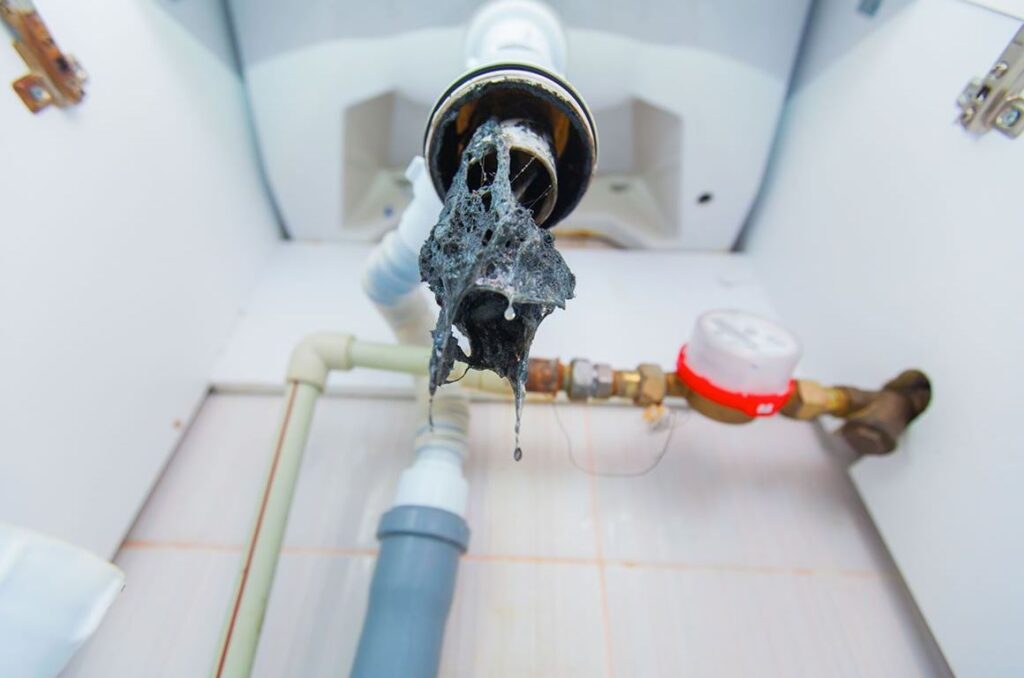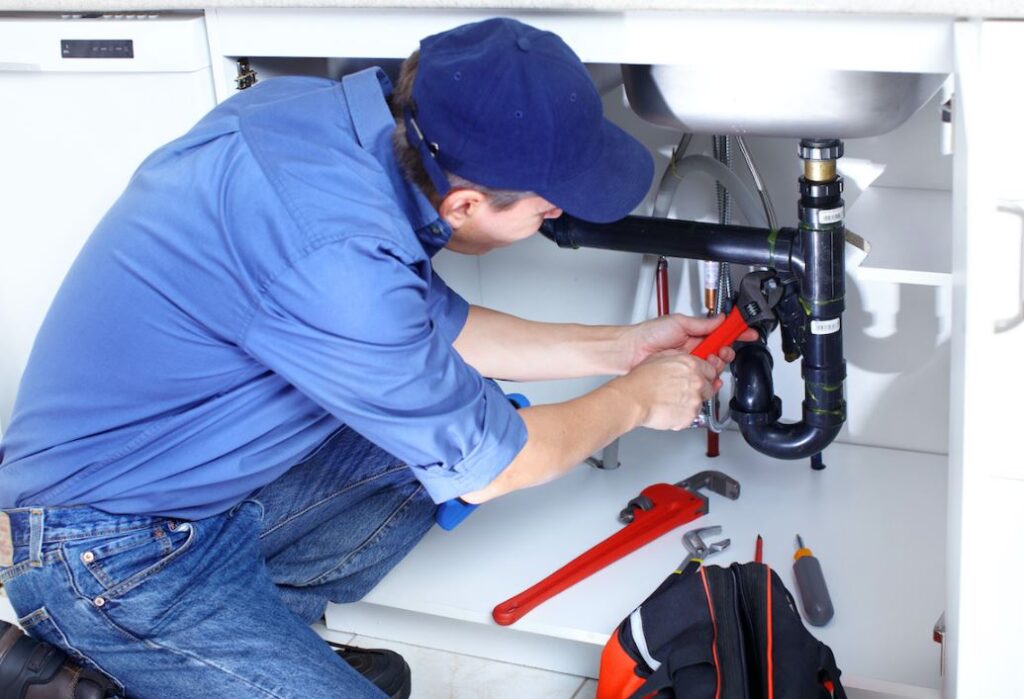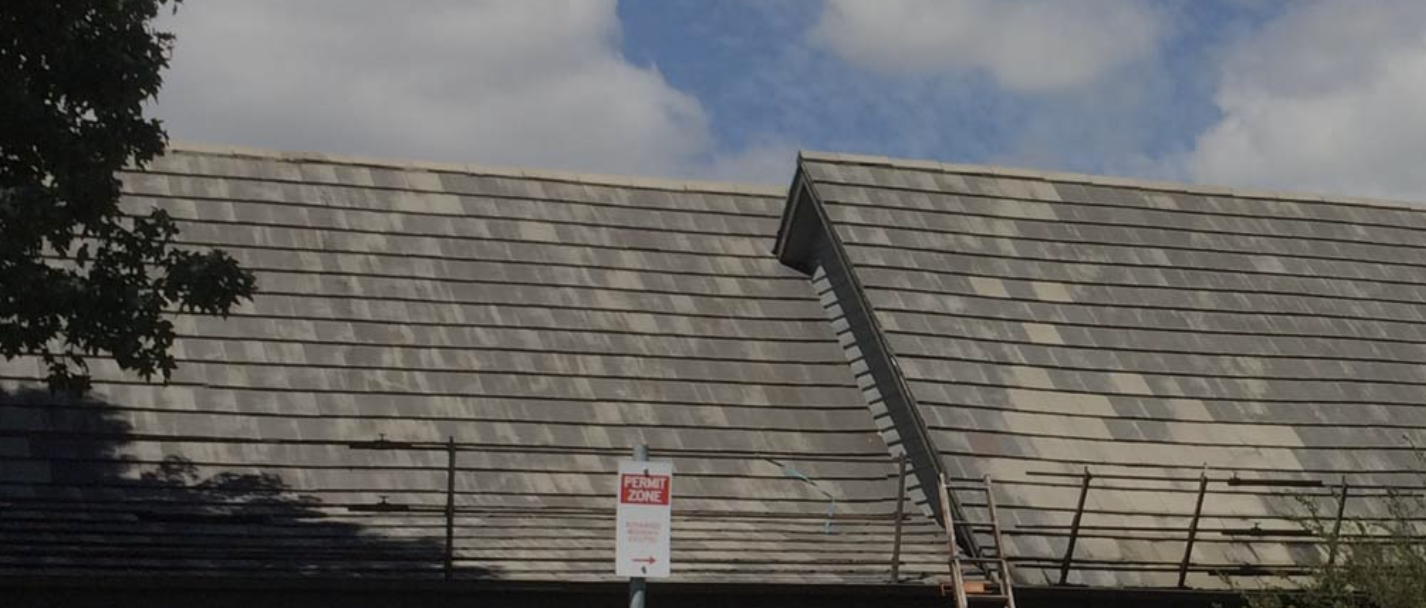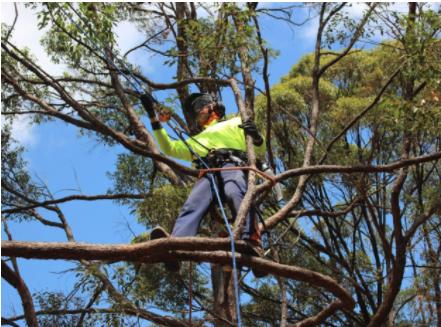Picture this: Your kitchen sink is clogged again, and water is leaking. You’ve watched a few YouTube tutorials and read some online guides. Armed with newfound confidence and a plunger, you decide to tackle the issue yourself. At first, it seems like success; the water drains away. Fast forward a couple of weeks, and now you’ve got a major leak under the sink, water damage, and a repair bill much higher than you ever anticipated.
Sound familiar? You’re not alone. Many homeowners are tempted to handle plumbing issues independently, lured by the promise of quick, cost-effective fixes. But while DIY solutions might seem attractive upfront, they can often lead to bigger, more expensive problems down the line. In this blog post, we’ll explore why DIY plumbing fixes could cost you more in the long run and why hiring a professional is usually the smarter choice.

The Lure of DIY Plumbing
The Appeal of Instant Fixes
In an era where how-to guides and video tutorials are just a click away, the allure of DIY fixes is stronger than ever. A simple search yields hundreds of step-by-step articles and videos that make even the most complicated tasks seem achievable. The convenience of getting an instant solution to your problem—whether it’s a leaky faucet or a blocked drain—can be irresistibly tempting. No need to schedule an appointment or wait for a professional; you can get your home back in order immediately—or so it seems.
The Cost Factor
Another driving factor behind the DIY approach is the prospect of saving money. Why pay a professional when you can buy a $5 part at the hardware store and do it yourself? In a society that highly values frugality and resourcefulness, the potential cost savings of DIY fixes often seem too good to pass up. No one likes to spend more money than they have to, and the idea that you can fix a potentially expensive problem for a fraction of the price is undoubtedly appealing.
False Confidence
Perhaps you’ve successfully unclogged a drain before or fixed a minor leak with some plumbing tape. These small victories can lead to a sense of overconfidence, convincing you that you’re ready to tackle bigger, more complicated plumbing issues. The problem is that plumbing is a highly specialised field, requiring specific expertise and tools for different tasks. While you might get lucky with a simple repair, the stakes are much higher when it comes to the more complicated issues.
Risks and Downsides of DIY Fixes
Lack of Expertise
Plumbing systems are intricate and often complex, with a myriad of components that most people need to become more familiar with. A slight mistake in one area can lead to significant issues elsewhere.
For instance, you may be able to stop a leak temporarily. Still, if you don’t address the root cause—corrosion, excessive pressure, or incompatible pipe materials—you’re just setting yourself up for future problems. This lack of comprehensive understanding and professional training makes seemingly straightforward fixes risky ventures.
Improper Tools
Another critical issue with DIY plumbing is the lack of specialised tools. Professionals invest in specialised equipment designed to handle various plumbing tasks effectively. These tools are not just for convenience; they’re often essential for correctly diagnosing and fixing problems.
For example, you might use an adjustable wrench instead of a pipe wrench, not realising that you’re risking either rounding off the nut or not tightening it enough, which can lead to leaks or other issues later on.
Potential for Error
The room for error in DIY plumbing is significant. Common mistakes include overtightening connections, which can lead to cracks or breaks; using the wrong sealant for a particular application, resulting in leaks or corrosion, or even misidentifying the root issue altogether. Another frequent error is using makeshift solutions like duct tape or incompatible materials, thinking they’ll offer a permanent fix when only temporary. These errors can worsen the immediate problem and cause other issues like water damage, mould growth, or even structural damage to your home.
The risks aren’t just theoretical. According to the Insurance Information Institute, water damage is one of the most common causes of home insurance claims, ranking only behind wind and hail damage. Many of these claims arise from failed DIY projects that lead to extensive damage, thereby significantly increasing repair costs and potentially raising your insurance premiums.
The Real Costs of DIY Plumbing Fixes
Short-term vs Long-term Costs
While the initial cost of a DIY fix may seem low, the long-term consequences could cost you more than you ever imagined. Those few dollars saved on a self-repair can quickly evaporate when you face recurring issues or have to replace parts that were incorrectly installed. What initially seemed like a budget-friendly quick fix becomes a money pit, draining your finances over time.
Damage to Home
The implications of DIY plumbing failures extend beyond mere monetary costs. Faulty repairs can lead to significant water damage, affecting your home’s foundations, walls, and ceilings. A small leak can easily escalate into a breeding ground for mould, impacting not only the structural integrity of your home but also your indoor air quality. When DIY goes wrong, the costs are not only financial but can also include damage to your most valuable asset—your home.

Impact on Property Value
If you’re considering selling your home, remember that potential buyers are increasingly savvy about the state of a property’s plumbing. Poor plumbing can significantly lower your home’s market value. Home inspections that reveal DIY plumbing work gone wrong could deter potential buyers, leading you to either lower your asking price or invest in emergency professional repairs.
Potential Health Risks
The repercussions of inadequate plumbing extend to health risks as well. Leaky pipes can become a breeding ground for bacteria, while improperly installed fixtures can contaminate water. For families, the potential for waterborne diseases should not be taken lightly. The cost of medical treatment for these kinds of issues can further inflate the real price of DIY plumbing.
Benefits of Hiring a Professional Plumbing Service
Expertise and Experience
Professional plumbers undergo rigorous training and certification, ensuring they’re equipped to handle various issues, from minor leaks to major installations. Their expertise enables them to quickly diagnose problems and offer lasting solutions, thereby reducing the risk of future complications. Visit www.proplumberadelaide.com to hire experienced plumbers in Adelaide.
Guaranteed Work
Many professional plumbing services offer warranties or guarantees on their work, giving you peace of mind. If a problem reoccurs, you can fix it without additional charges, something that’s not an option when you go the DIY route.
Long-term Savings
The initial outlay for professional plumbing services might seem high. Still, the cost often justifies itself when you factor in the long-term benefits—like fewer recurring issues and less risk of damage to your home. Professional repairs can increase the lifespan of your plumbing system, ultimately saving you money and hassle in the long run.
While quick, low-cost DIY fixes are tempting, the potential for errors and long-term costs makes it a risky path to tread. From the expertise and specialised tools to the long-term savings and peace of mind, professional plumbing services offer benefits that DIY simply can’t match.…
When it comes to business, first impressions are everything. Your signage is often the first thing that potential customers will see, so it’s important to make sure that it’s representative of your brand and sends the right message. But with so many available varieties and styles of signage out there, how do you know which one is right for your company? Read these tips and tricks to help you choose the perfect signage for your business:
1. Know your brand.
This is the most important step in choosing the right signage for your company. Your signage should be an extension of your brand, so it’s important to make sure that it properly reflects who you are as a business. If your brand is fun and whimsical, for example, then your signage should reflect that.

2. The size of your sign should be proportional to the size of your business.
A small sign for a small business is appropriate, while a large sign may be overwhelming. Conversely, a large sign may be necessary for a business with multiple locations.
3. Consider your audience.
Who are your target your signage? Your target audience will play a big role in determining the type of signage you need. If you’re trying to reach families, for example, then a kid-friendly sign would be a good choice.
4. Location and placement of your signage.
Where you put your signage is just as important as the sign itself. Make sure that your sign is visible and easy to read from a distance. If it’s placed either too high or too low, it may be difficult for people to see.
5. Keep it simple.
Your signage should be easy to understand and not overcrowded with too much information. Use clear and concise language, and avoid using industry jargon that your target audience may not be familiar with. Good signwriters are worth the investment.
6. Make sure it’s readable.
Your signage should be large enough and use a font that is easy to read from a distance. You don’t want your potential customers to struggle to read your sign and give up before they even have a chance to see what you have to offer.
7. Use high-quality materials.
Your signage is an investment, so you’ll want to make sure that it’s made with high-quality materials that can withstand the elements. If your sign is made with cheap materials, it will reflect poorly on your business and likely won’t last very long.

8. Work with a professional.
Designing and creating signage can be a complex process, so it’s important to work with a professional who has experience and expertise in the field. They will be able to help you choose the right type of signage for your business and ensure that it’s produced correctly.
9. Get creative.
Don’t be afraid to think of something new and uncommon when it comes to your signage. Your sign is an opportunity to be creative and really make your business stand out.
10. Update your signage regularly.
Your signage should be updated regularly to reflect any changes in your company, such as a new logo or tagline. This will ensure that your sign is always representative of your brand and accurate.
What are the different types of signs to use for my business?
There are various types of signs used in business, and each has its own advantages and best uses.
One of the most common types of signs is the traditional business sign. These are the signs you see on the front of most businesses, and they usually include the business name and logo. Traditional business signs are a great way to make your business stand out and attract customers.
Another common type of sign is the banner sign. Banner signs are often used to advertise special sales or events. They are large and eye-catching, and they can be hung from the ceiling or mounted on the wall. Banner signs can get people’s attention and get them into your store.
Window signs are another popular type of sign. Window signs are usually smaller than banner signs, and they are typically placed in the front window of a business. Window signs are a great way to let people know what your business is all about and what products or services you offer.
Finally, there are LED signs. LED signs are becoming increasingly popular, as they are very energy efficient and can be programmed to display a variety of messages. LED signs are a great way to get your message across in a very eye-catching way.…
Are you looking for a roofer for your roof, whether for a residence or a business? Don’t be fooled by a cheap business! Here are some tips to ensure you get quality work. Keep in mind that a poorly designed roof, whether sloped or flat, may not leak on the first day. It is usually after a few weeks that infiltration problems appear. We have already seen roofs being redone after less than five years, because of incompetent roofers!
1- Request a quote
A roofer who assesses the work to be done from the cow floor may have a business that is struggling! Make sure you get a proper quote, ideally from three different companies, for your roof repairs. It is better to pay the right price. This will prevent you from being surprised by additional costs for problems that the average roofer cannot see because they are not mounted on the roof.
2- Meet the roofer in person
Think you’ve found “THE” roofer you can trust? Meet him in person to find out who you’re dealing with. Don’t just rely on submission. Beware of roofers who put pressure on you. They often want to work quickly to move on to the next customer. If some people suggest that you do an inspection even if you are not at home, be careful! You won’t know if they really went up on the roof to do checks. And you will be sure that they are not used to inspecting the attic.
3- Ask the roofer
When accepting a quote for your roof, ask the roofer to make sure that the work will be done as it should, according to your requirements. After all, it’s not for an igloo. And redoing a roof costs a lot of money! Here are six important questions you should ask before signing a quote with the company that will be working on your roof:
- Are the works guaranteed?
- How long will the work take?
- Will access to my residence or my business be possible during the work?
- Which suppliers do you do business with?
- Is it possible to contact old customers for reference?
- Will the waste be collected after the work?
3. A roofer who guarantees his services
As a professional, a roofer must be able to offer these customers a guarantee. This is the so- called ten-year guarantee. Thanks to the latter, in particular within the framework of the installation of a new roof, you will be covered in the event of damage following the acceptance of the works. This guarantee, as its name suggests, is valid for a period of 10 years. In addition to the ten-year guarantee, also make sure that the service provider to whom you will entrust the repair of your roof has professional liability insurance. The legislative texts in force expressly require all professional roofers to take out this insurance.
4. Check the equipment used by the roofer
For a true professional roofer, it goes without saying that he uses equipment that meets safety standards when installing or maintaining your roof. On top of that, also demand that he prove to you that the human elements he has have the technical qualifications required to install the roof of your house.
5. Choose an experienced roofer
It’s all well and good to have all the permits, but you still have to be sure that the roofer knows what he is talking about! A company that has been in business for ten years, as is the case with Toiture Union, is a sign of credibility, both in terms of business model and reputation. An experienced roofer “has seen others”, as they say! Its goal is that the “hard roof”! Are you unsure? Read comments on social media. You will get an idea of the quality of our work!
Contact a professional roofer recommended by your loved ones
The easiest way to find the best roofer for roof restoration is to talk to your loved ones. They can know a professional with several years of experience like this roofer in the 15 who has never disappointed his clients. Depending on the opinions of your friends or families, you can easily establish a small list of roofers to contact. Word of mouth is effective in that you will be able to see the provider’s accomplishments for yourself. If he is recommended by one or more of your friends, do not hesitate to trust him and make an appointment with him as soon as possible. …
Landscape design is the art of implementing beautiful structures and natural elements that bolster the value of modern residential or commercial properties. Typically the contemporary landscape design is the construction of a garden, deck or pergola system. Landscaping design involves conceptualization, development, installation and maintenance of the final product. A complete and well-designed landscaping structure will create an eco-friendly feature that bolsters property value and creates an outdoor sanctuary for your home.
Principles of Modern Landscaping Design
The principles of designs are techniques used by landscaping designers for a more effective and attractive finish. The main fundamental principles of design are Balance, Focalisation, Simplicity, Variety and Flow. Excellent modern landscaping designs combine both soft and hard landscaping features to create a harmonious outdoor space for your property using the following design principles:
- Balance
Balance is the distribution of the visual weighting of colours, textures, objects colours and space. The effective use of balance harmonises your outdoor landscape, providing a pleasant aesthetic appeal. There are two key types of balance; symmetrical and asymmetrical.
Symmetrical landscaping design involves distributing the visual weight from one side of your landscape to the other. This ‘Mirroring’ creates a formal aesthetic of foliage and masonry, often arranged in geometric patterns through walkways, garden beds and vertical horticulture.
Asymmetrical balance on the other hand is a popular technique that involves unequal visual weight on each side of the composition. Asymmetrical balance can be an effective focalisation technique.
- Focalisation
Focalisation in landscaping design is the emphasis of the most prominent part of your landscape. In other words, it’s the key aspect of your garden you wish to exhibit. Whether it be an architectural feat or a particularly beautiful tree, expert garden designers will buttress the focal point of their garden using different shapes, textures and contrasts.
- Simplicity
More isn’t always better. It’s important landscapes aren’t clustered with too many different colours, shapes and textures. Scandinavian garden designers are notorious for their use of clean and minimalistic styles, which has been a pivotal influencer in modern landscaping and architecture. By keeping things simple and consistent, it makes for a clean and sleek aesthetic, but don’t be dull!
- Variety
Involves using a multitude of design elements to maintain and guide a viewers attention through your composition. In landscaping design, this could be the distribution and arrangement of different flower species. Variety is essential for an alluring landscape and plays an important role in flow.
- Flow
To retain focus throughout your landscape, the use of recurring elements is essential in leading the eye to your garden’s focal point. Flow is the practice of implementing consistent spaces and patterns in your garden to create a sense of rhythm. Naturally, the use of rhythm creates attractiveness to your garden that draws in and maintains attention.
Hard v.s Soft Landscaping
- Soft landscaping is also referred to as natural landscaping. It is characterised by natural elements such as water and plants that enhance the visual appeal of the area. Landscape plants are typically introduced to create a calming effect that will make a person feel at home. Some examples of soft landscaping features include water features, ground covers and trees.
- On the other hand, hard landscaping is the use of ‘hard’ materials such as masonry, fountains, pavement, walkways, light installations and outdoor ponds. Unlike soft landscaping, hard landscaping is more difficult to implement but doesn’t require constant maintenance. Instead, hard landscaping lays the foundations for the longevity of your garden. Hard and soft landscaping complement each other and are essential aspects of modern landscaping design.
Where Can I Find Good Landscaping Designs?
If you live in Melbourne, you’re in luck. Desired Landscapes could fit your home with a new flush landscape design. Pinterest is a great way to find inspiration for your garden. Rather than creating a design from scratch, you can draw inspiration from the styles used by award-winning landscape designers. If you’re able, investing in professional landscaping significantly enhances the value of your property.
Can I do Landscaping Myself?
Absolutely! It’s important to remember that landscape design should have a purpose and function. If the goal is to add value to your home, a well-built landscape is always an attractive feature. Not everyone can afford professional landscaping. The good news is there’s plenty of great advice on how you can do it yourself. A DIY outdoor landscape is an exciting project, but it’s important to understand that it takes a lot of time, effort and patience. Your landscape should involve hard and soft landscaping and you should aim for a design that is easy to maintain and upgrade over time. Well-built landscape design can create a relaxing sanctuary for you and your family. If you do it yourself, it’s an incredibly rewarding way for you to kick back and enjoy the fruits of your labour.
What Steps Can I Take From Here?
Modern landscaping designs should be carefully thought out before construction begins. When it comes to building a landscape, the best approach is to sketch out a mind map for the purpose of your landscape. If you’re ready to make an investment to increase the value of your property, search around for local landscaping services near you to compare quotes and begin conceptualizing the landscape you’ve envisioned.
…
A qualified arborist Brisbane is one of the most important professionals in the life of a resident of Brisbane. They are involved in several different types of services, such as tree pruning, tree removal, tree protection, and the application of insecticides. Most importantly, these people are also responsible for protecting property and structures from destruction from tree damage, including possible dangerous weather conditions and insects.
Bureaus must undergo an annual tree inspection, or when any tree is suspected of having a major disease, damage, or insect infestation, such as Hazard Tree Risk Assessments. This is to make sure that the arborist Brisbane’s report and price accurately reflect the actual costs to remove, cure, treat, or remove trees from the site.
The most common way that you can tell if the arborist Brisbane report and price are accurate is if they give you the option to look at their reports online. Many companies make it very easy for you to order a free online arborist Brisbane report and price. However, there are many other companies that will charge you for this service, and the price will be significantly higher than the same service offered by an agency that provides you with the same service free of charge.
There are companies that offer free online services, but not all of them will offer an accurate arborist Brisbane report and price. Companies that do provide the information for free will charge you for it.
Some companies believe that giving the public free reports is a time-saving benefit. However, in many cases, the information contained within the reports is inaccurate. In addition, the reports often have small print that makes it difficult to understand the information contained within the reports.
Another big problem is that many reports do not contain all of the information necessary to properly assess the tree service, Brisbane. Since so many people use the Internet to purchase arborist Brisbane reports and price, many times, there are reports that do not contain the vital information that a potential customer needs to make an informed decision. For example, some people choose to purchase their arborist Brisbane report and price because they want to be able to get information such as type of tree, location, length, etc.
Many people make the mistake of thinking that all reports are created equal, when, in fact, not all reports contain all of the information needed to make an informed decision. A report has everything needed to assess the tree in question will be accurate correctly. When you are reading your report, make sure you know what you need to know.
Also make sure that you are able to understand the specific conditions which led to the arborist Brisbane report and price being compiled, and make sure that the arborist Brisbane report and price you receive are consistent. Some companies will publish the arborist Brisbane report and price so that the consumer can see the true cost of the tree service Brisbane in question.
Although not all companies are teams with reputable arborists, it is important to always choose a company with a good reputation and a proven track record. This can ensure that you will receive high-quality service.
So what should you look for in an arborist Brisbane? The first thing that you should consider is their ability to be fair to all companies and the consumer. This is the key to a good arborist Brisbane report and price.
Secondly, if the service is not included in your report, then make sure that you are not being overcharged for the service you did receive. If you are being overcharged for services that were included in your arborist Brisbane report and price, then you should look for a more reasonable company.
In conclusion, one of the most important things to keep in mind is that it is very important that you find an arborist Brisbane who has the reputation of being fair to all companies and consumers. While you may believe that your arborist Brisbane is fair to all companies, it may actually be an arborist Brisbane who simply has the easiest customer for you. Therefore, it is very important that you look for an arborist Brisbane who truly knows his or her business and can provide you with accurate information for all aspects of your tree removal.
…

